
A. Santhakumaran (Santha)
Accredited Customer Experience Specialist (ACXS) | International CX & PX Consultant | Keynote Speaker
Pursuing a Master's Degree in Social Science (MSc) at UPM
Bachelor of Business Administration (Hons) with a Major in Marketing from UKM
HRDF Certified Trainer (TTT/2930)
Six Sigma Black Belt (International Six Sigma Institute)
Certified Hypnotherapist
Certified NLP Practitioner (NFNLP – USA)
Certified First Aid & Emergency Responder
Certified Mold & Microbial Removal Practitioner
Certified Design Thinking Specialist
With nearly two decades of corporate experience across various industries, including property development, telecommunications, international trade exhibitions, and customer loyalty engagement, Santha is a distinguished thought leader in Customer Experience (CX). Based in Kuala Lumpur, he's a sought-after CX consultant in Southeast Asia, known for his deep understanding of local culture and ability to drive exceptional experiences.
Santha's expertise encompasses customer acquisition & engagement strategies, customer insights, building customer-obsessed cultures, and patient experience. His work in patient experience focuses on creating seamless, compassionate, and effective interactions within healthcare environments, benefiting both patients and providers.
As a keynote speaker, Santha shares insights that resonate with global audiences, helping organizations adapt to the evolving CX landscape. He's also a judge for prestigious customer-centricity awards, recognizing excellence in CX and patient experience.
Constantly evolving, Santha is currently pursuing a Master's degree, demonstrating his commitment to lifelong learning and personal development.
Join him on the journey to unlock the power of exceptional customer and patient experiences, and build a brighter future for businesses and individuals alike.
#CustomerExperience #CXExpert #PatientExperience #KeynoteSpeaker #LifelongLearner
PROFESSIONAL QUALIFICATIONS:
Accredited Customer Experience Specialist (ACXS)
International Customer Experience Consultant
Judge for North American Customer Centricity Awards
Judge for World Customer Centricity Awards
Judge for CXPA Emerging Leader’s Award
Pursuing Master’s Degree in Social Science MSc (UPM)
Bachelor of Business Administration (Hons) (UKM) (Majored in Marketing)
Chartered Customer Experience Master Trainer
Certified Master Sales Trainer
Design Thinking Practitioner
HRDF Certified Trainer (TTT/2930)
Six Sigma Black Belt (International Six Sigma Institute)
Certified NLP Practitioner (NFNLP – USA)
Certified Hypnotherapist
ABOUT A. SANTHAKUMARAN:
A. Santhakumaran (Santha) is a renowned Customer Experience (CX) thought leader, keynote speaker, and trainer based in Kuala Lumpur, Malaysia. Santha specializes in multiple domains, such as property development, telecommunications, international trade exhibitions, and customer loyalty engagement with local and global organizations. With two decades of corporate experience, he offers a unique perspective on customer acquisition & engagement strategies, customer insights, patient experience, and building customer-obsessed cultures.
Santha’s background includes advising multinational corporations on strategies for improving CX and patient experience. His versatility and understanding of local culture make him a leading CX consultant in Southeast Asia. His approach involves comprehensive customer journey mapping, customer experience design, customer experience measurement, design thinking, and future-proofing businesses.
Before establishing CX Expert Asia in 2008, Santha was the Country Manager for Obelix Networks Sdn Bhd and PT Obelix Indonesia, network engineering and solution providers in South East Asia. His work continues to shape the region's approach to customer and patient experience.
Available For: Advising, Authoring, Consulting, Influencing, Speaking
Travels From: Kuala Lumpur
Speaking Topics: Customer Experience & Patient Experience Transformation - People, Process and Technology
| Santhakumaran Atmalingam ACXS | Points |
|---|---|
| Academic | 70 |
| Author | 159 |
| Influencer | 89 |
| Speaker | 76 |
| Entrepreneur | 73 |
| Total | 467 |
Points based upon Thinkers360 patent-pending algorithm.
 The Power of Empathy in Healthcare: Transforming Patient Experiences
The Power of Empathy in Healthcare: Transforming Patient Experiences
Tags: Customer Experience, Health and Wellness, Healthcare
 Accredited Customer Experience Specialist
Accredited Customer Experience Specialist
Credential ID 000055
Tags: Customer Experience, Customer Loyalty, Design Thinking
 Petrochem Safety (M) Sdn Bhd
Petrochem Safety (M) Sdn Bhd
Tags: Business Strategy, Customer Experience, Marketing
 Creating a Digital Intelligent Customer Experience Ecosystem in Five Years for Business Model Innovation
Creating a Digital Intelligent Customer Experience Ecosystem in Five Years for Business Model Innovation
Tags: Customer Experience, Ecosystems, AGI
 Embracing the Future: The Evolution of Customer Experience in Malaysia
Embracing the Future: The Evolution of Customer Experience in Malaysia
Tags: Customer Experience, Customer Loyalty, Design Thinking
 Top 10 Mistakes in Customer Experience Management
Top 10 Mistakes in Customer Experience Management
Tags: Customer Experience, Customer Loyalty, Design Thinking
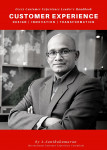 The Six Disciplines of Customer Experience Transformation
The Six Disciplines of Customer Experience Transformation
Tags: Customer Experience, Customer Loyalty, Design Thinking
 Atmalink CT Sdn Bhd
Atmalink CT Sdn Bhd
Tags: Customer Experience, Customer Loyalty, Design Thinking
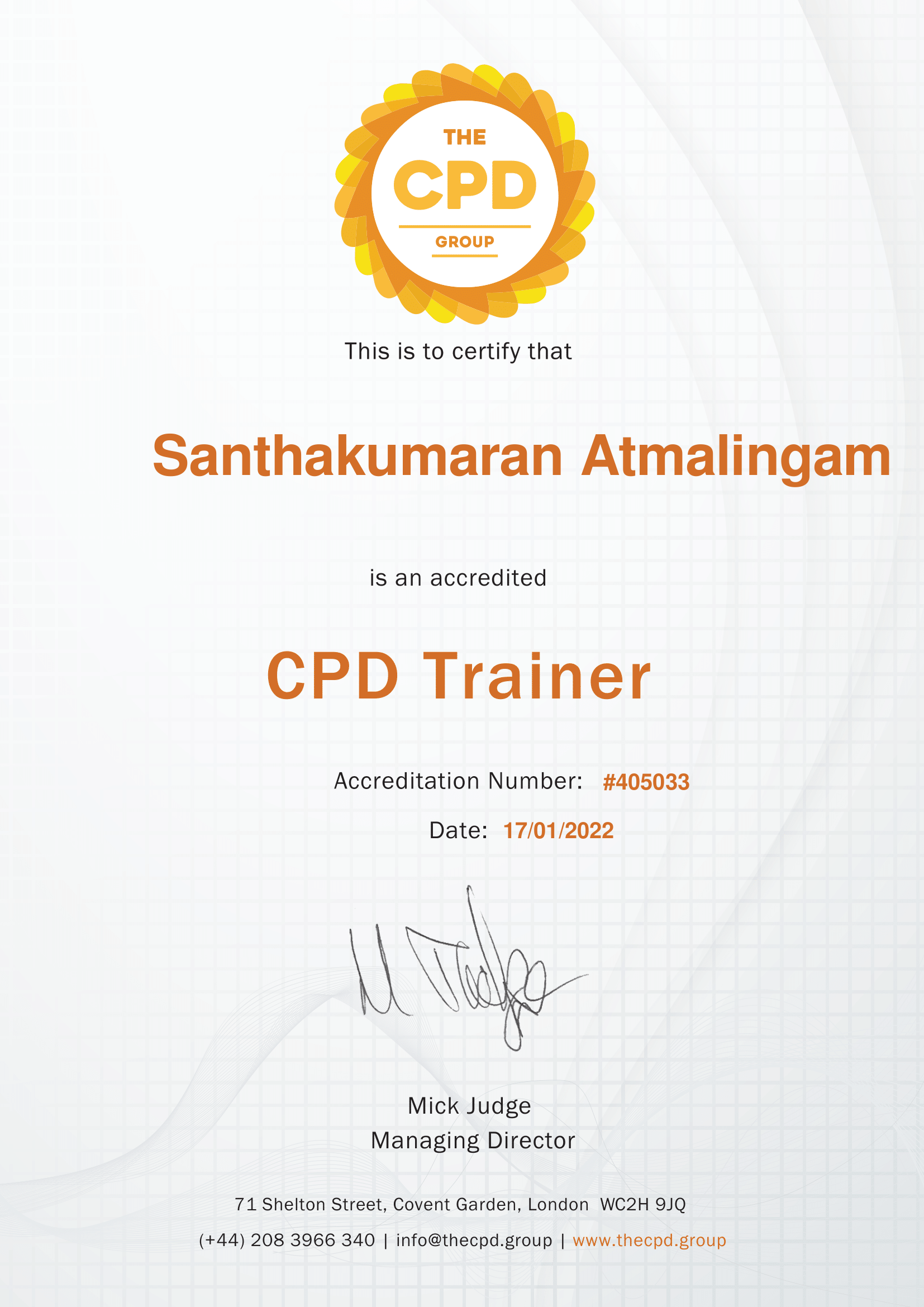 Accredited CPD Trainer by The CPD Group
Accredited CPD Trainer by The CPD Group
Tags: Customer Experience, Customer Loyalty, Design Thinking
 CX Expert Asia
CX Expert Asia
Tags: Customer Experience, Customer Loyalty, Design Thinking
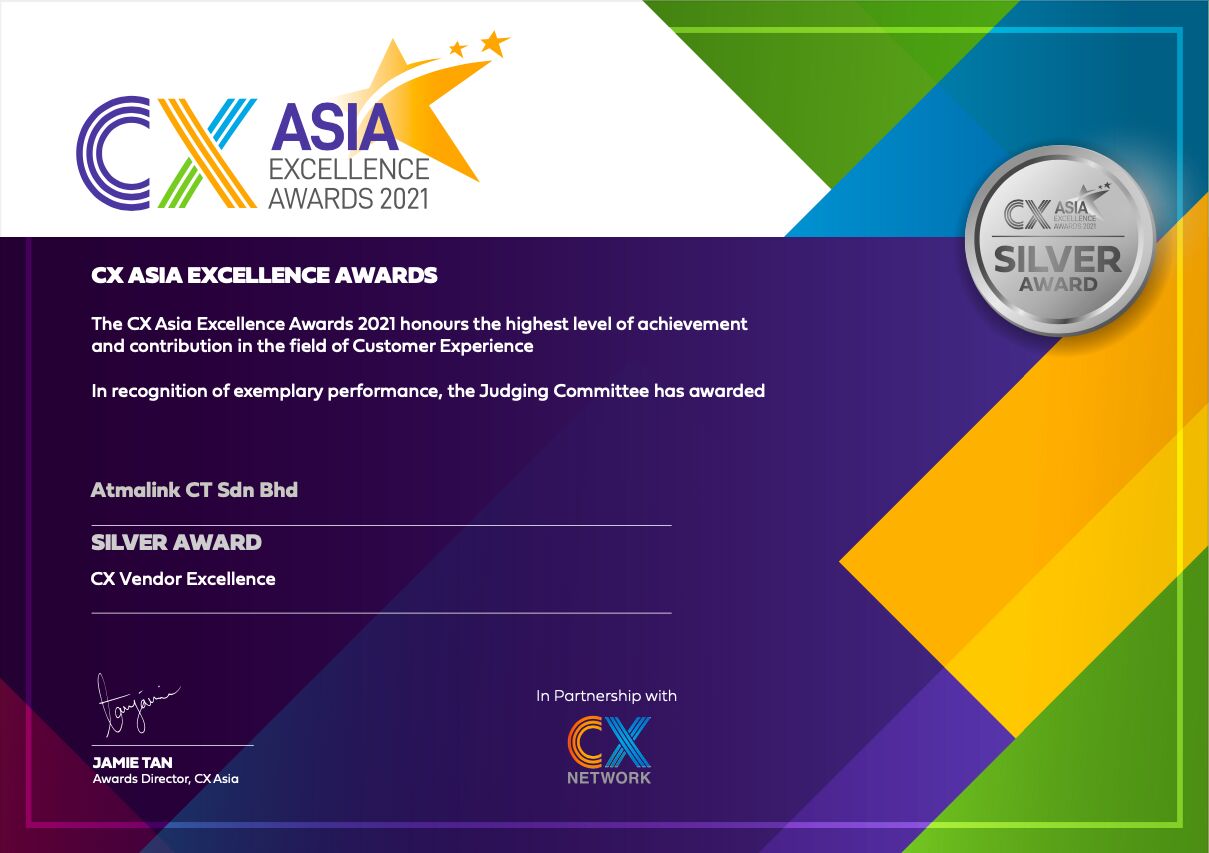 CX Excellence Award
CX Excellence Award
Tags: Customer Experience
 Judge for Customer-Centricity World Series
Judge for Customer-Centricity World Series
Tags: Customer Experience
 APAC Customer-Centricity Awards Judge
APAC Customer-Centricity Awards Judge
Tags: Customer Experience, AGI
 Customer-Centricity World Series - Awards Judge
Customer-Centricity World Series - Awards Judge
Tags: Customer Experience, AGI
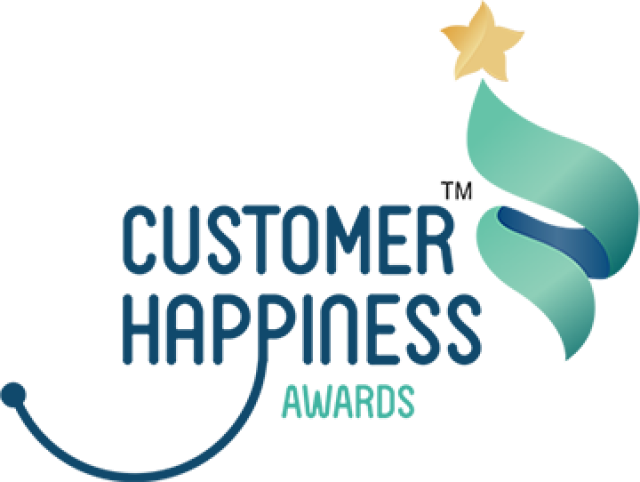 Customer Happiness Awards Dubai - Judge
Customer Happiness Awards Dubai - Judge
Tags: Customer Experience
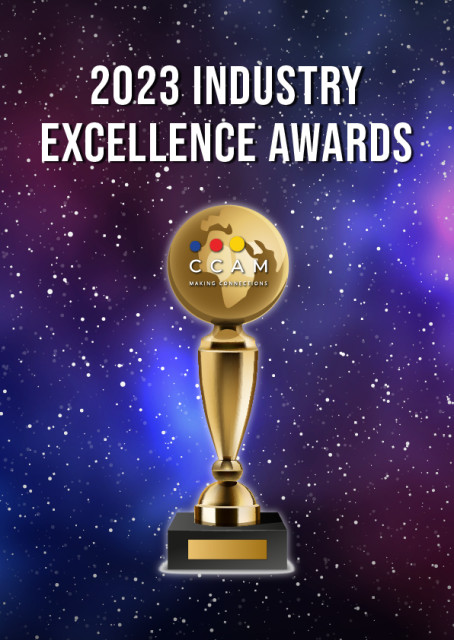 CCAM Industry Excellence Awards 2023 - Judge
CCAM Industry Excellence Awards 2023 - Judge
Tags: Customer Experience
 European Customer-Centricity Awards - Judge
European Customer-Centricity Awards - Judge
Tags: Customer Experience
 Top 10 Universiti Kebangsaan Malaysia Alumni Leaders 2024
Top 10 Universiti Kebangsaan Malaysia Alumni Leaders 2024
Tags: Customer Experience
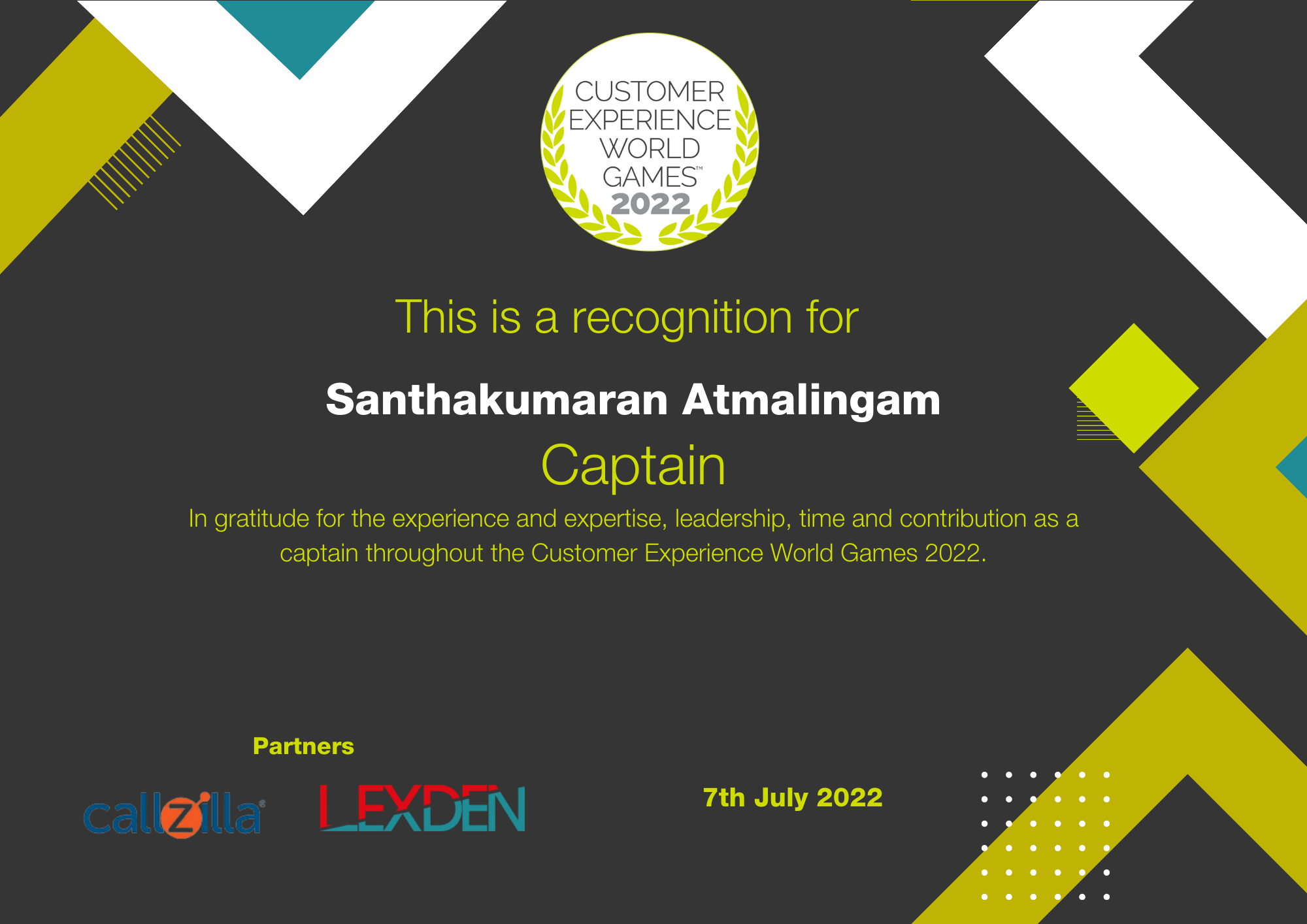 Team Captain and Overall Champion in Customer Experience World Games 2022
Team Captain and Overall Champion in Customer Experience World Games 2022
Tags: Customer Loyalty, Customer Experience
 222 TOP influencers you need to follow for 2022
222 TOP influencers you need to follow for 2022
Tags: Customer Experience
 North American Customer Centricity Awards
North American Customer Centricity Awards
Tags: Customer Experience
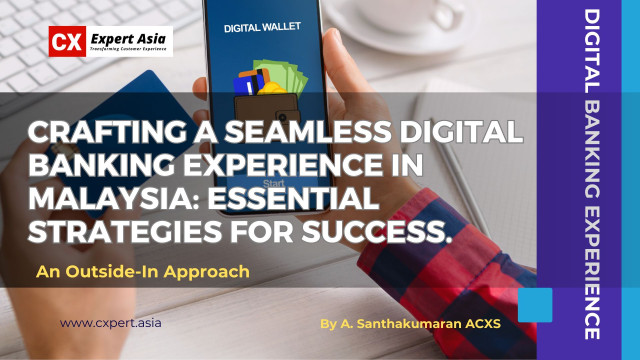 Crafting a Seamless Digital Banking Experience in Malaysia: Essential Strategies for Success.
Crafting a Seamless Digital Banking Experience in Malaysia: Essential Strategies for Success.
Tags: Customer Experience, Customer Loyalty, FinTech
 Transforming Hospital Stays: Understanding and Meeting Patient Needs
Transforming Hospital Stays: Understanding and Meeting Patient Needs
Tags: Customer Experience, Customer Loyalty, Healthcare
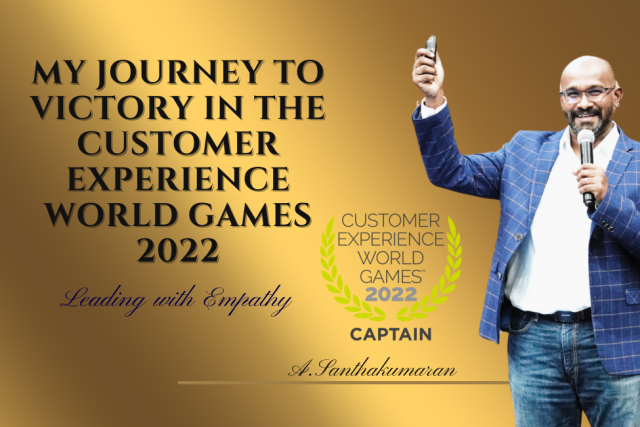 Leading with Empathy: My Journey to Victory in the Customer Experience World Games
Leading with Empathy: My Journey to Victory in the Customer Experience World Games
Tags: Customer Experience, Customer Loyalty, Leadership
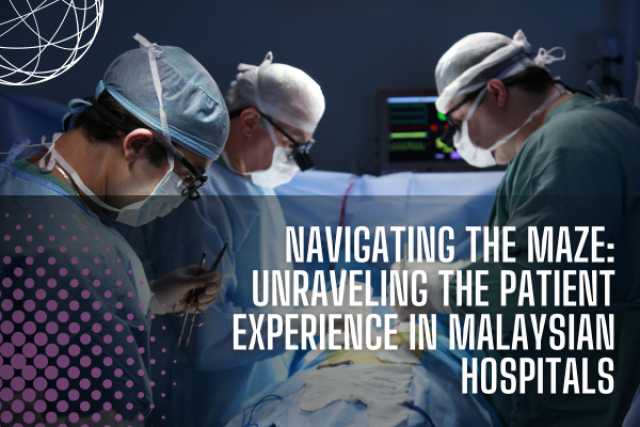 Differentiating Patient Experience and Patient Care: An Inside-Out vs. Outside-In Approach
Differentiating Patient Experience and Patient Care: An Inside-Out vs. Outside-In Approach
Tags: Customer Experience, Customer Loyalty, Healthcare
 Malaysia's Rise in Medical Tourism: A Look at Growth and Trends
Malaysia's Rise in Medical Tourism: A Look at Growth and Trends
Tags: Customer Experience, Customer Loyalty, Healthcare
 The Customer Experience Dilemma
The Customer Experience Dilemma
Tags: Customer Experience, Customer Loyalty, Healthcare
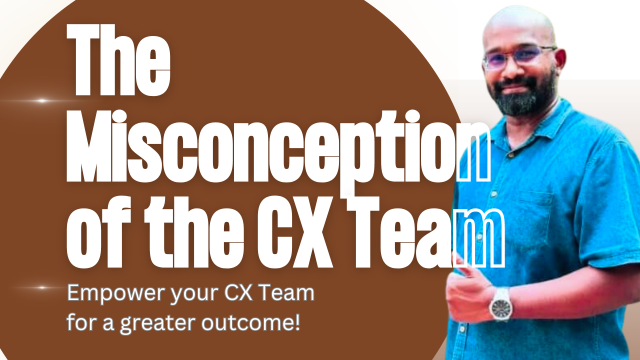 The Misconception of CX Team
The Misconception of CX Team
Tags: Customer Experience, Customer Loyalty, Design Thinking
 CX Team Hercules Awarded Overall Winner at the Customer Experience World Games 2022
CX Team Hercules Awarded Overall Winner at the Customer Experience World Games 2022
Tags: Customer Experience
 CX Hercules - Customer Experience World Games 2022 Champion
CX Hercules - Customer Experience World Games 2022 Champion
Tags: Customer Experience
 The 100th Monkey Effect in Customer Experience Transformation
The 100th Monkey Effect in Customer Experience Transformation
Tags: Customer Experience, Customer Loyalty, Design Thinking
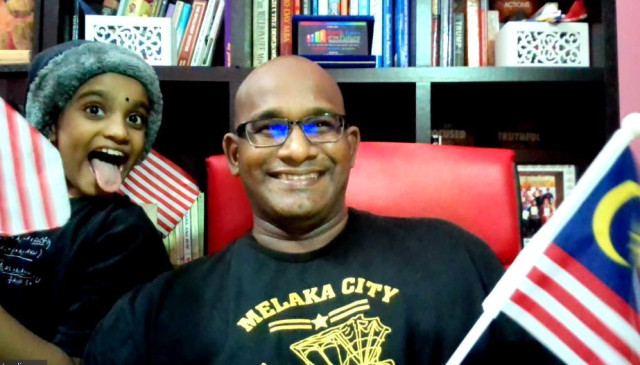 The Missing Link in Customer Experience
The Missing Link in Customer Experience
Tags: Customer Experience, Customer Loyalty, Product Management
 CX Summit 2024 Keynote Speaker
CX Summit 2024 Keynote Speaker
Tags: Customer Experience, AGI
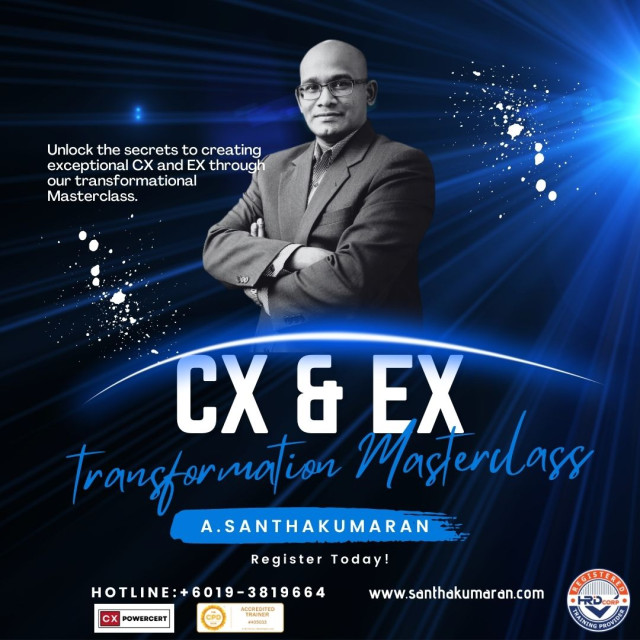 4th Nxt CX Summit 2023 - Keynote Delivery
4th Nxt CX Summit 2023 - Keynote Delivery
Tags: Customer Experience
 The CX Senate 2021 - India
The CX Senate 2021 - India
Tags: Customer Experience, Customer Loyalty, Design Thinking
 Keynote Speaker: Global CX Consultant & Founder, CX Expert Asia
Keynote Speaker: Global CX Consultant & Founder, CX Expert Asia
Tags: Customer Experience
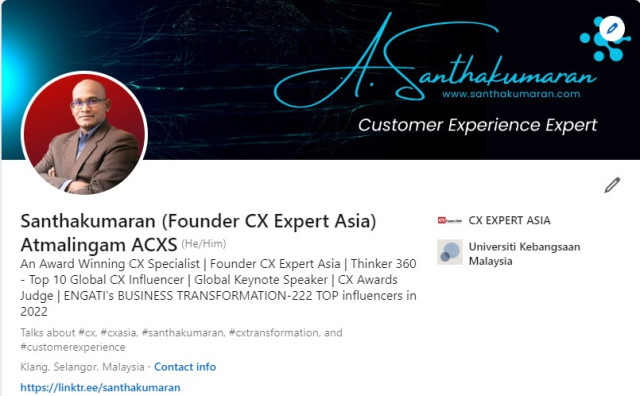 Keynote Speaker: CXPA, CX Day 2021
Keynote Speaker: CXPA, CX Day 2021
Tags: Customer Experience
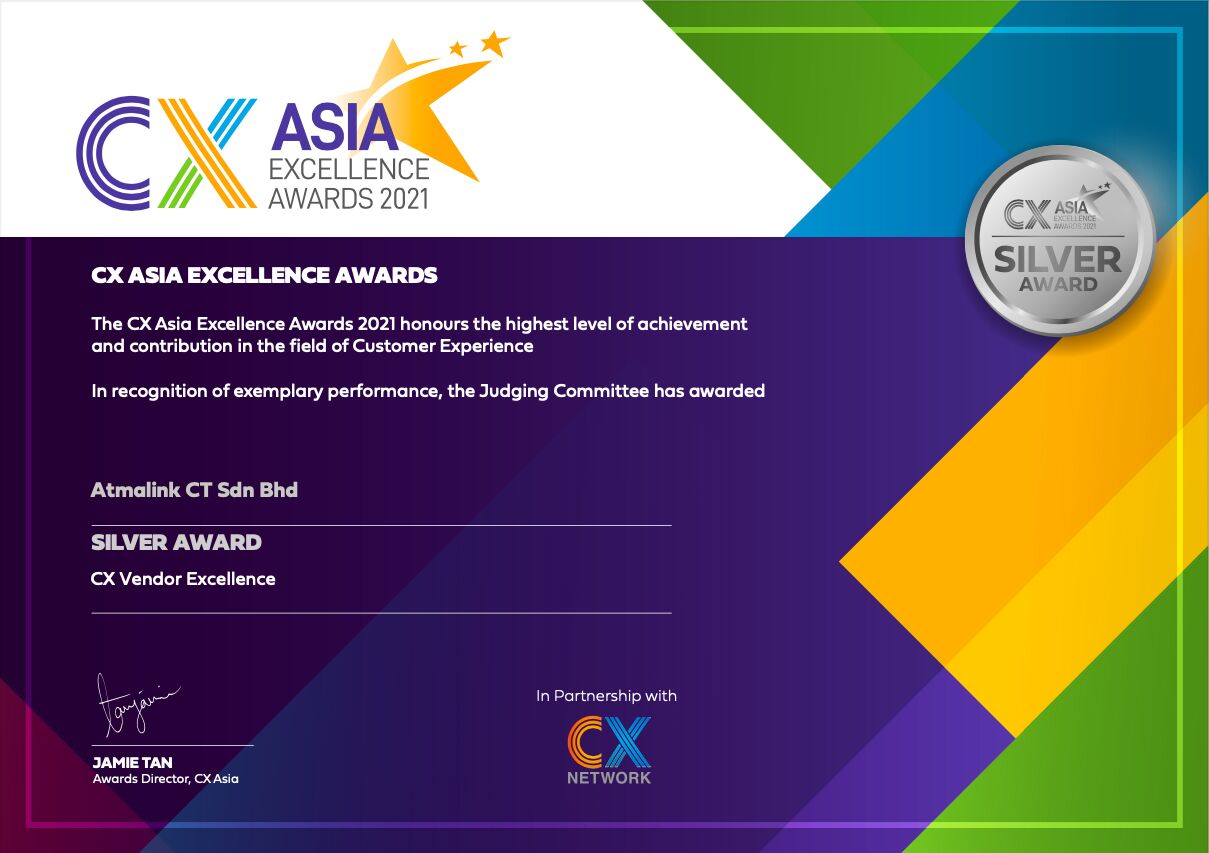 Atmalink CT Sdn Bhd makes it big with Silver CX Vendor Excellence Award
Atmalink CT Sdn Bhd makes it big with Silver CX Vendor Excellence Award
Tags: Customer Experience, Customer Loyalty, Design Thinking
 Global Organization -People of Indian Origin
Global Organization -People of Indian Origin
Tags: Culture, Social
 The future of CX measurement
The future of CX measurement
Tags: Customer Experience
 Global CX Summit Middle East 2021
Global CX Summit Middle East 2021
Tags: Customer Experience, Customer Loyalty, Design Thinking
 THE CX FILES PODCAST Setting Up A CX Programe From the Ground Up
THE CX FILES PODCAST Setting Up A CX Programe From the Ground Up
Tags: Customer Experience

Tags: Customer Experience, Customer Loyalty, Design Thinking

Tags: Customer Experience, Customer Loyalty, Design Thinking

Tags: Customer Experience, Customer Loyalty, Design Thinking

Tags: Customer Experience, Customer Loyalty, Design Thinking

Tags: Customer Experience, Customer Loyalty, Design Thinking

Tags: Customer Experience, Customer Loyalty, Design Thinking

Tags: Customer Experience, Customer Loyalty, Design Thinking

Tags: Customer Experience, Customer Loyalty, Design Thinking

Tags: Customer Experience, Customer Loyalty, Design Thinking

Tags: Customer Experience, Customer Loyalty, Design Thinking

Tags: Customer Experience, Customer Loyalty, Design Thinking

Tags: Customer Experience, Customer Loyalty, Design Thinking

Tags: Customer Experience, Customer Loyalty, Design Thinking

Tags: Customer Experience, Customer Loyalty, Design Thinking

Tags: Customer Experience, Customer Loyalty, Design Thinking

Tags: Customer Experience, Customer Loyalty, Design Thinking

Tags: Customer Experience, Customer Loyalty, Design Thinking

Tags: Customer Experience, Customer Loyalty, Design Thinking

Tags: Customer Experience, Customer Loyalty, Design Thinking

Tags: Customer Experience, Customer Loyalty, Design Thinking

Tags: Customer Experience, Customer Loyalty, Design Thinking

Tags: Customer Experience, Customer Loyalty, Design Thinking

Tags: Customer Experience, Customer Loyalty, Design Thinking

Tags: Customer Experience, Customer Loyalty, Design Thinking
 Leading Customer Experience Influencer in Asia
Leading Customer Experience Influencer in Asia
Tags: Customer Experience, Customer Loyalty, Design Thinking

Tags: Customer Experience, Customer Loyalty, Design Thinking

Tags: Customer Experience, Customer Loyalty, Design Thinking
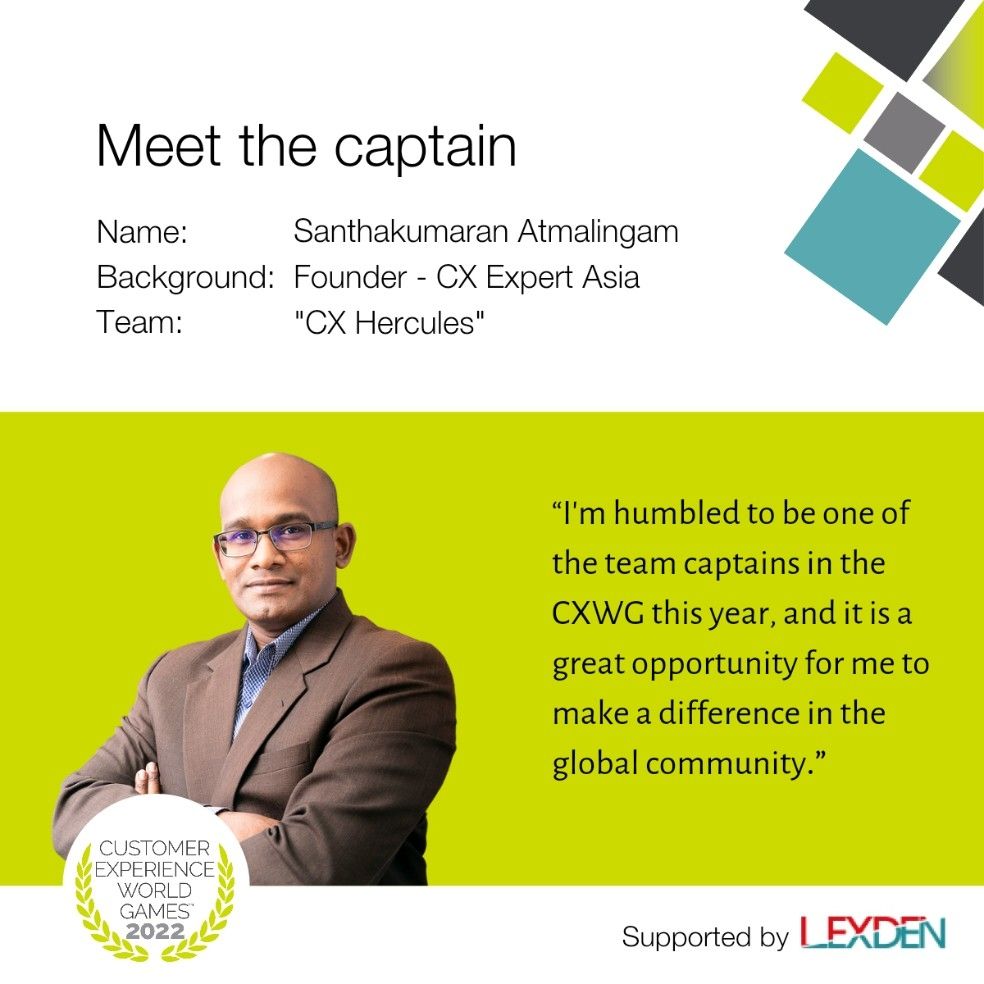 Team Captain - The CX Hercules in Customer Experience World Games
Team Captain - The CX Hercules in Customer Experience World Games
Tags: Customer Loyalty, Customer Experience
 Sirim QAS International Sdn Bhd
Sirim QAS International Sdn Bhd
Tags: Customer Experience, Customer Loyalty, Sales
 Patient Experience Management Masterclass
Patient Experience Management Masterclass
Tags: Healthcare
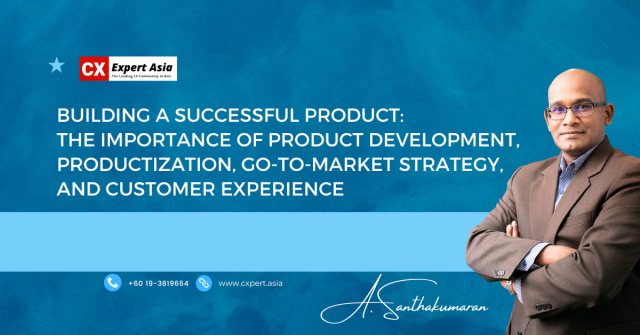 The CX design framework | Santhakumaran Atmalingam talks to engatica
The CX design framework | Santhakumaran Atmalingam talks to engatica
Tags: Customer Experience
 CX Goalkeeper with Santhakumaran A. - S1E34 is about the CX infinite loop & the marriage of CX & EX
CX Goalkeeper with Santhakumaran A. - S1E34 is about the CX infinite loop & the marriage of CX & EX
Tags: Customer Experience, AGI
 Santhakumaran Atmalingam - Customer Experience Consultant at CX EXPERT ASIA
Santhakumaran Atmalingam - Customer Experience Consultant at CX EXPERT ASIA
Tags: Customer Experience
 How Can Insurers Leverage Customer Experience?
How Can Insurers Leverage Customer Experience?
Tags: Customer Experience
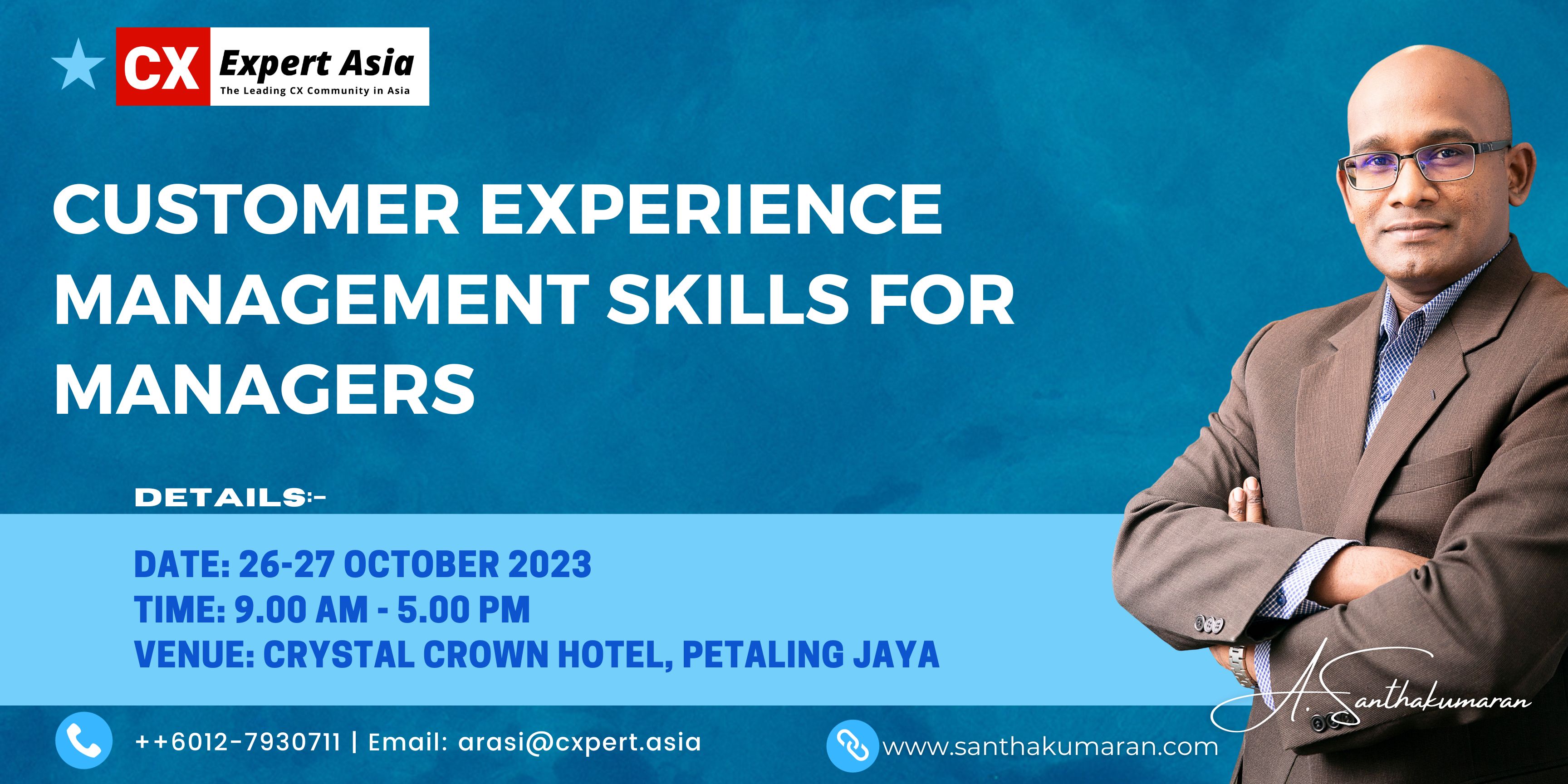 Customer Experience Management Skills for Managers
Customer Experience Management Skills for Managers
Unlock Excellence in Customer Experience Management (CEM) - Masterclass for Managers
Elevate your managerial prowess with our intensive Customer Experience Management (CEM) Masterclass. In this face-to-face program, you'll gain the strategic insights and practical skills needed to excel in the dynamic world of CX.
Why Attend?
Join us for this immersive journey to harness the power of CEM and lead your team to exceptional customer experiences. Don't miss this opportunity to become a CX champion.
Date: 26-27 October 2023 Location: Crystal Crown Hotel, Petaling Jaya, Selangor, Malaysia
Space is limited. Secure your spot today!
#CXManagementMasterclass #CustomerExperienceExcellence #LeadershipDevelopment
Tags: Customer Experience, Customer Loyalty, Design Thinking
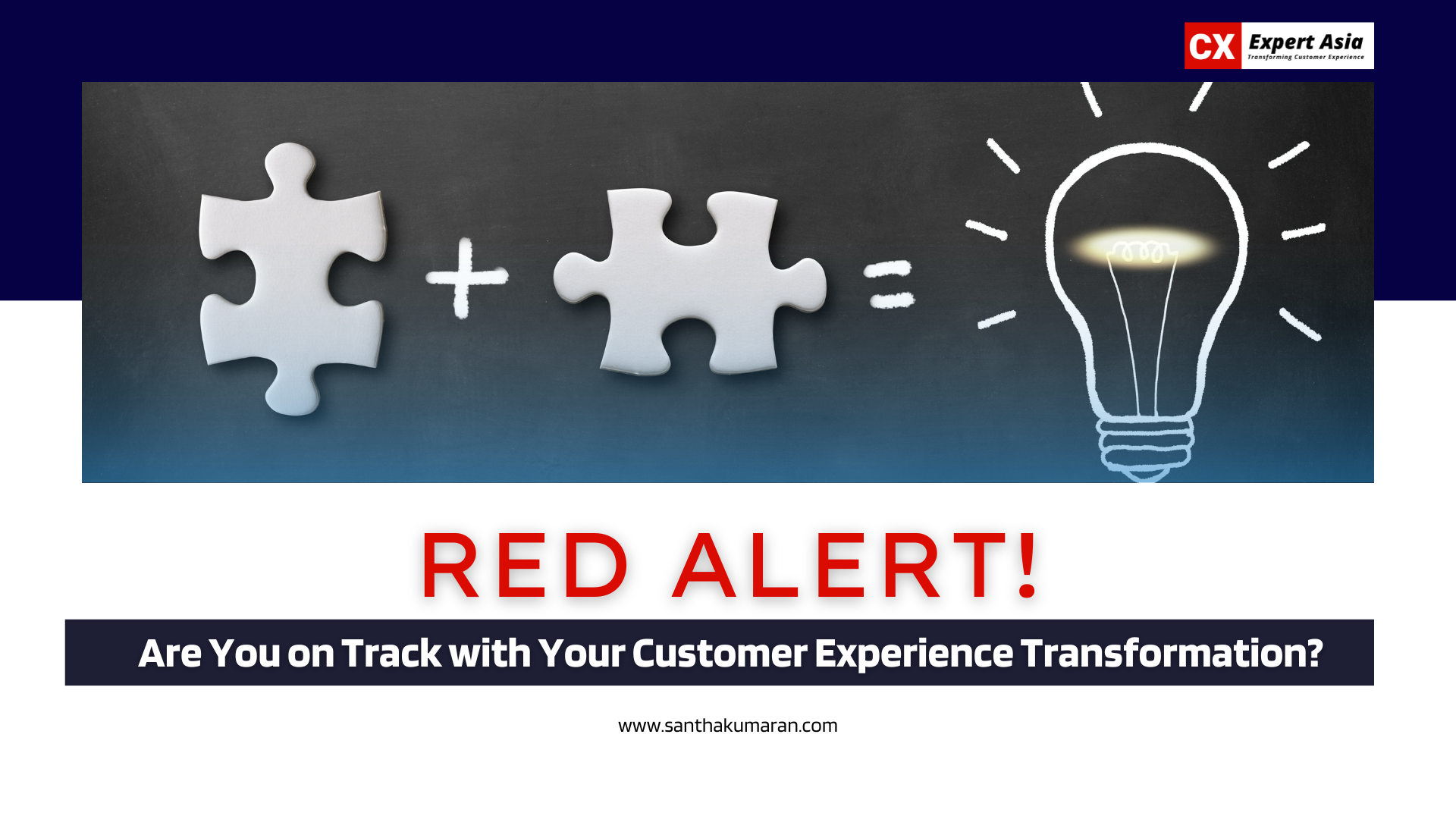 Top 15 Challenges in Customer Experience Transformation!
Top 15 Challenges in Customer Experience Transformation!
Customer experience (CX) transformation has become an essential strategy for businesses aiming to thrive in today's competitive market. However, the journey to achieving a seamless customer experience can be riddled with unforeseen challenges. These obstacles can not only derail your progress but also lead to significant setbacks. Here's an overview of some common hurdles in the CX journey and why it's crucial to stay on track.
A change in leadership can disrupt ongoing initiatives. New leaders may have different priorities or lack a thorough understanding of the existing CX strategy. This can lead to a loss of momentum, with previous efforts potentially getting sidelined or reimagined in ways that don't align with the original vision.
Management's focus can shift due to emerging trends or external pressures. For example, sudden emphasis on diversity, equity, and inclusion (DEI), environmental, social, and governance (ESG), or sustainability can divert attention from CX projects. While these are important areas, they may lead to reallocation of resources away from CX if not managed carefully.
When the CX Head or other key team members leave, the entire transformation effort can go haywire. New hires might not have the same vision or experience, leading to a loss of continuity. It takes time to rebuild team cohesion and get everyone on the same page.
Even with the best intentions, budget cuts or financial restructuring can impact CX initiatives. Without adequate funding, projects can stall or be abandoned, leaving customers with a fragmented experience.
When a company is bought over by investors, or undergoes restructuring, uncertainty looms. Employees might be anxious about their jobs, and CX initiatives can take a backseat while the new structure settles. This uncertainty can cause a ripple effect throughout the organization, affecting morale and productivity.
Delays in CX implementation can result from a variety of factors—bureaucracy, waiting for approvals, or even external events like a pandemic. When progress slows down, employees can become disengaged, leading to a drop in enthusiasm and a loss of focus on customer-centric objectives.
Natural disasters, pandemics, wars, or other external crises can significantly impact CX transformation. These events can lead to operational disruptions, forcing companies to prioritize immediate concerns over long-term CX goals.
Breaking down departmental silos is often a major challenge. When departments operate independently without clear communication channels, CX initiatives suffer. Collaboration and cross-departmental alignment are crucial for a successful transformation.
Bringing in new consultants or sudden changes in consulting partners can cause disruption. Different consultants may have varying approaches to CX, leading to inconsistency and confusion. This can affect the overall CX strategy and its implementation.
In some organizations, top management must refer everything to a parent company, creating bottlenecks in decision-making. These delays can hamper the timely execution of CX initiatives and frustrate employees who are eager to move forward.
Employees and managers might resist new ways of working, especially if they are not involved in the change process. Resistance can lead to delays, poor implementation, and a lack of enthusiasm for CX initiatives.
CX transformation should be driven by data and insights. Companies that fail to measure and analyze customer feedback or track key performance indicators (KPIs) may not understand where improvements are needed.
Employees need to be trained to understand and deliver on the CX vision. If they aren't equipped with the right skills and knowledge, they may not be able to meet customer expectations.
While technology can enhance customer experience, relying too heavily on it without considering human interactions can create a cold, impersonal experience. A balanced approach is key.
A successful CX transformation requires a culture that prioritizes customers. If the company culture doesn't support customer-centric practices, efforts to improve CX will likely falter. If profit and loss is the priority, then CX will face a challenging situation because we require time to show the ROI and result.
Customer Experience transformation is a complex journey that demands commitment, strategic planning, and a customer-centric culture. By understanding these common challenges and reasons for failure, companies can better prepare and address potential obstacles. A successful CX transformation requires cross-functional collaboration, clear communication, consistent strategy, and strong executive support. With these elements in place, companies can navigate the CX journey and create a seamless, memorable customer experience.
Tags: Customer Experience, Customer Loyalty, Design Thinking
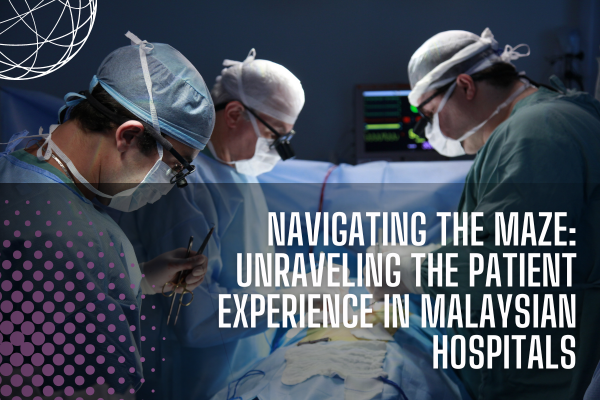 Navigating the Maze: Unraveling the Patient Experience in Malaysian Hospitals
Navigating the Maze: Unraveling the Patient Experience in Malaysian Hospitals
The modern healthcare system is a labyrinth of processes, technology, and human interactions. While it is designed to provide care, the journey through this system can be overwhelming for patients. From navigating insurance and appointments to understanding complex medical jargon and undergoing treatment, patients face many challenges that influence their overall experience.
For hospitals and healthcare providers, creating an optimal patient experience requires more than just clinical excellence. It demands empathy, clear communication, and a deep understanding of the patient's perspective. Before hospitals can design a compelling patient journey, they must first grasp the complexity of being a patient. This means recognizing patients' physical, emotional, and logistical hurdles and developing strategies to address them.
Let's explore the key aspects that contribute to the complexity of the patient experience. We examine the touchpoints that matter most to patients and identify common pain points that can create stress and confusion. By understanding these factors, hospitals can begin to design a patient journey that is efficient, compassionate, and responsive to individual needs.
Cultural Sensitivity in Patient Care
Malaysia is a culturally diverse country with significant Malay, Chinese, Indian, and Indigenous populations, among others. Hospitals must consider cultural and religious practices when providing care. For example, during Ramadan, hospitals should ensure that Muslim patients have options for fasting-compatible meal times and food. In addition, respecting religious customs, like offering spaces for prayer, contributes to a patient-centric approach.
Navigating Insurance and Payments
The complexity of medical insurance can be overwhelming for patients. In Malaysia, where public and private insurance systems operate, understanding coverage can be challenging. Real-life scenarios include patients struggling to comprehend insurance terminology or unexpectedly discovering their coverage doesn't extend to specific treatments. Hospitals can create dedicated help desks or provide insurance liaisons to assist patients with their queries. It's painful for patients to receive last-minute turn down from their insurance providers, and they are still determining what's next: do they continue with the private hospital or move to a government hospital?
Language Barriers and Communication
Malaysia's linguistic diversity can create communication hurdles in hospitals. Imagine a patient whose primary language is Tamil, struggling to understand instructions given in Bahasa Melayu or English. Hospitals can tackle this by employing multilingual staff, using translation services, or providing printed materials in various languages to ensure clear communication and reduce the risk of misunderstandings.
Quality of Care and Patient Safety
Patients need to feel confident in the care they receive. In Malaysia, we have some of the best medical practices in place. Hospitals can further improve quality and safety by adopting international best practices, such as conducting regular audits, ensuring staff is adequately trained, and creating a safety culture. For example, some hospitals have implemented checklists for surgical procedures to reduce the risk of errors etc.
Technology and Digital Health
The adoption of technology in healthcare can transform the patient experience. Malaysian hospitals can leverage telemedicine for remote consultations, reducing the need for in-person visits. Another example is the use of electronic health records (EHR), enabling seamless sharing of patient information across different departments, thereby improving the efficiency of care delivery. I still see a lot of manual processes in Malaysian hospitals. Which can digitalize along the way.
Emotional Support and Patient Well-being
Hospitals can be stressful environments, and emotional support is crucial. This could mean providing counselling services, establishing patient support groups, or ensuring a friendly and compassionate staff in Malaysian hospitals. For instance, some hospitals have started offering art therapy or meditation sessions to help patients cope with stress and anxiety during their stay. It's no more about the processes alone; it's about looking after the patient's emotions in total.
Patient Education and Health Literacy
Patients often require more information to make informed decisions about their health. Consider a patient diagnosed with diabetes who don't fully understand the lifestyle changes required. Hospitals can offer educational programs or workshops to improve health literacy. Additionally, providing clear and straightforward educational materials about various conditions and treatments can empower patients to take control of their health.
Community Engagement and Outreach
Hospitals play a vital role in their communities. A real-life example is a hospital that organizes health fairs or free health screenings in local neighbourhoods, fostering stronger connections and building trust with the public. These outreach efforts can also help hospitals understand their communities' unique needs and challenges. Currently, NGOs are undertaking this responsibility to reach out to the community.
Patient Feedback and Continuous Improvement
Gathering patient feedback is essential for hospitals to identify areas for improvement. In Malaysia, hospitals can conduct regular patient satisfaction surveys or hold focus groups to gather insights. A hospital might discover through feedback that wait times in the emergency department are too long, leading to process changes that streamline patient flow and improve the overall experience.
The journey through a hospital can be a daunting experience for patients. As we've explored, many factors contribute to this complexity—from cultural and linguistic diversity to the intricacies of insurance and technology. By understanding these challenges, hospitals in Malaysia can better design patient-centric experiences that are both efficient and compassionate.
Successful patient journeys require a multi-faceted approach that addresses cultural sensitivity, clear communication, emotional support, and community engagement. By focusing on these aspects, hospitals can improve patient satisfaction, build trust, and foster a reputation for high-quality care.
Ultimately, the patient experience is at the heart of healthcare. By embracing patient feedback and continuously striving for improvement, Malaysian hospitals can create an environment where patients feel valued, understood, and cared for. The path forward involves collaboration, empathy, and a commitment to providing the best possible care for everyone who walks through the hospital doors.
Tags: Customer Experience, Health and Wellness, Healthcare
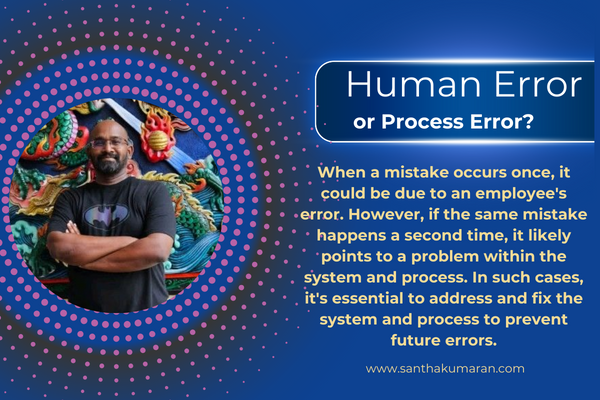 Human Error or Process Error?
Human Error or Process Error?
When Repeated Mistakes Signal System Problems: A Guide to Identifying and Fixing Process Flaws
In any organization, mistakes are bound to happen. Whether it's an oversight in a report, a missed deadline, or a customer service misstep, errors are a natural part of business operations. When a mistake occurs once, it's often attributed to an individual's error or misjudgment. However, when the same mistake happens again, it usually indicates a deeper issue within the system or process. Identifying and addressing these systemic problems is crucial for preventing future errors and maintaining operational efficiency. Let's explore this concept with some examples and discuss how organizations can take action to correct systemic flaws.
When an employee makes a mistake, it's essential to understand the context. An isolated incident might suggest a lack of training, an oversight, or a moment of human error. In such cases, a simple correction or additional training might be sufficient to prevent recurrence.
However, if the same error occurs multiple times, especially among different employees, it's a red flag indicating a systemic issue. This could be due to unclear processes, poor communication, inadequate resources, or other structural issues. When this happens, shifting focus from individual performance to process improvement is essential.
Consider a scenario where a company's accounting department frequently experiences data entry errors. Initially, the problem lies with the individual employees responsible for entering data. However, upon closer inspection, the issue could be traced back to the system. The software used for data entry may need to be more intuitive, or the process requires proper checks and balances. In this case, addressing the systemic flaw might involve:
Another example involves a retail company that receives frequent customer complaints about delayed deliveries. Initially, the blame might fall on the delivery personnel or the customer service team. However, if the issue persists, it likely points to a problem within the company's logistics system. This could be due to inadequate inventory management, inefficient routing, or communication gaps between departments. To fix the issue, the company might need to reevaluate its logistics process, invest in technology to improve tracking and establish clear communication protocols.
When organizations identify systemic issues, addressing them requires a thoughtful and systematic approach. Here are the key steps to consider:
Conduct a thorough investigation to understand why the mistake occurs. This might involve reviewing processes, conducting interviews, and analyzing data.
Once the root cause is identified, develop and implement corrective measures. This might involve process redesign, technology upgrades, additional training, or improved communication channels.
After implementing changes, closely monitor the system to ensure the issue is resolved. Be prepared to make adjustments as needed based on feedback and ongoing analysis.
Foster a Culture of Continuous Improvement
Encourage employees to report issues and suggest improvements. By fostering a culture of continuous improvement, organizations can prevent systemic issues from reoccurring.
When a mistake happens once, it may be an individual's error. However, when it happens twice or more, it likely indicates a systemic issue. Addressing and fixing these issues is essential for maintaining operational efficiency and delivering high-quality outcomes. By taking a proactive approach to identifying and resolving process flaws, organizations can prevent future errors and create a more resilient and effective system.
Tags: Customer Experience, Design Thinking, Healthcare
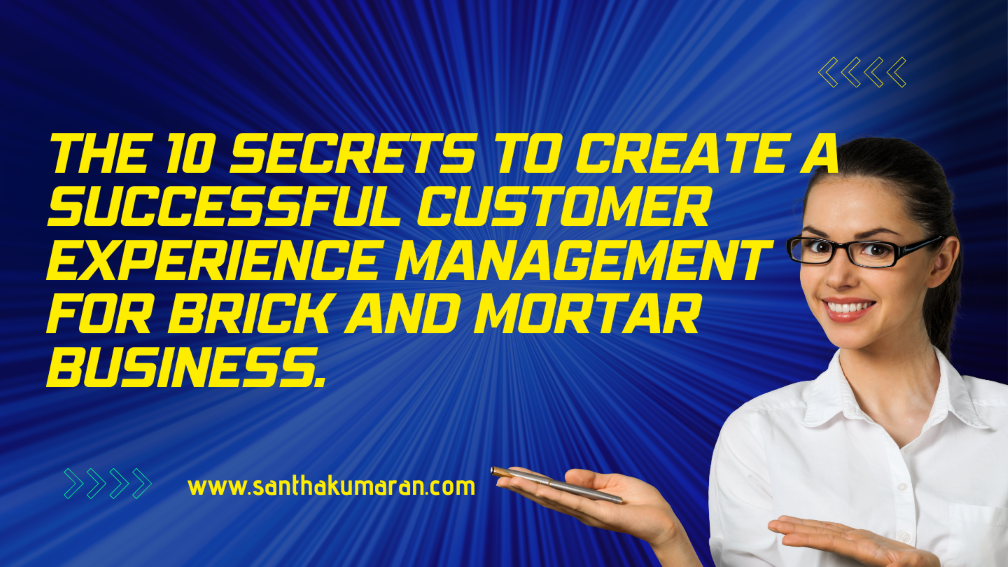 The 10 Secrets to Create A Successful Customer Experience Management For Brick and Mortar Business.
The 10 Secrets to Create A Successful Customer Experience Management For Brick and Mortar Business.
Brick-and-mortar businesses have a unique opportunity to create memorable customer experiences beyond transactions. In a digital age, where convenience is paramount, mastering the art of customer experience management is crucial for standing out and fostering brand loyalty. Here are ten secrets to excel in this endeavor:
In a world where customer expectations continually evolve, these ten secrets offer a roadmap to mastering customer experience management in brick-and-mortar businesses. By combining innovative strategies with a genuine commitment to meeting customer needs, your business can create a customer-centric environment that keeps customers coming back time and again.
Tags: Customer Experience, Customer Loyalty, Design Thinking
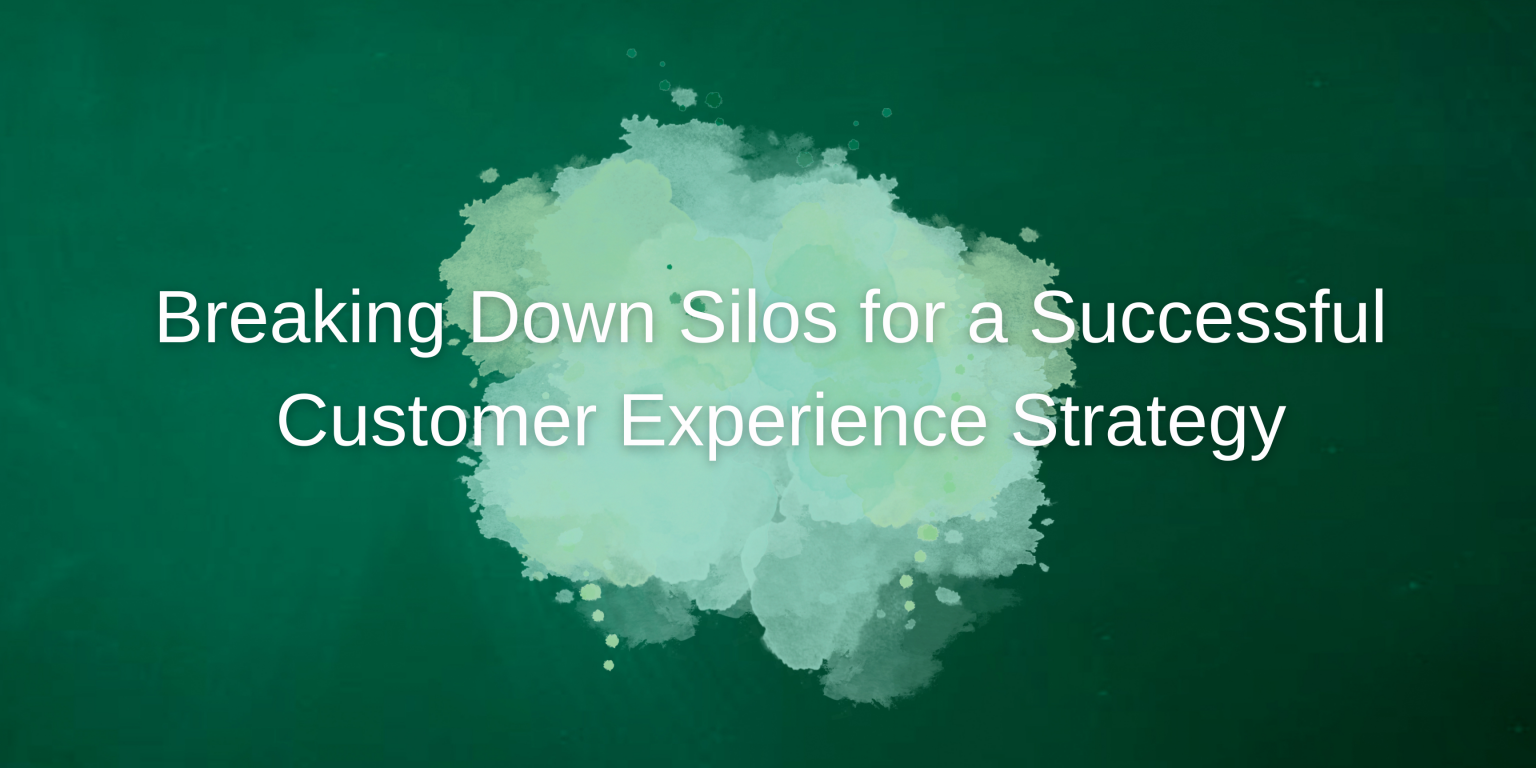 Breaking Down the Silo for Successful Customer Experience Transformation
Breaking Down the Silo for Successful Customer Experience Transformation
The digital landscape has transformed how businesses operate, making customer experience a critical factor in their success. Customer expectations have risen, and companies must prioritize delivering exceptional experiences to stay competitive. However, many organizations face a common obstacle in achieving this goal – organizational silos.
This comprehensive article will explore breaking down silos to facilitate successful customer experience transformation, leading to improved customer satisfaction, loyalty, and business growth.
In business, silos refer to isolated organizational divisions that hinder effective team communication and collaboration. Silos often emerge when departments focus solely on their goals, failing to share information and insights with others. This lack of cross-functional cooperation can be detrimental to customer experience, leading to disjointed processes, inconsistent messaging, and an inability to address customer needs holistically.
Silos manifest in various ways, such as separate marketing, sales, and customer support teams working in isolation. This fragmentation can result in frustrated customers who experience disconnected touchpoints throughout their journey. To ensure a seamless customer experience, organizations must break down these barriers and foster a culture of collaboration and shared responsibility.
Effective leadership is pivotal in transforming the customer experience by dismantling organizational silos. Leaders must emphasize the importance of customer-centricity and align all departments towards this common goal. They should encourage open communication, set clear expectations, and establish cross-functional teams to foster collaboration.
Leaders should also invest in tools and technologies that facilitate seamless information sharing between teams. For instance, implementing a unified Customer Relationship Management (CRM) system can centralize customer data and insights, ensuring that all departments have access to up-to-date and relevant information.
Transforming the customer experience requires a shift in organizational culture. Emphasizing a customer-centric approach should be a part of the company's DNA. To achieve this, employees at all levels must understand the importance of delivering exceptional experiences.
Leaders should conduct regular training sessions to instil customer-focused values and ensure that every team member understands their role in contributing to the customer journey. Acknowledging and rewarding employees who go the extra mile to enhance the customer experience will further reinforce the desired cultural shift.
One of the most significant challenges in overcoming silos is breaking down departmental barriers. Rather than functioning as isolated entities, departments should work together to create a unified customer experience. Here are some strategies to achieve this:
Encourage Cross-Functional Collaboration. Promote regular meetings and workshops that involve representatives from various departments. These sessions foster mutual understanding, identify pain points in the customer journey, and brainstorm innovative solutions.
Align departmental objectives with the overarching goal of delivering exceptional customer experiences. When teams share common objectives, they are more likely to collaborate effectively and prioritize customer-centric initiatives.
Implementing efficient communication channels, such as project management software or team collaboration tools, enables seamless information sharing and updates across different teams.
Consider creating physical spaces that encourage interaction between departments. Co-locating teams can lead to spontaneous conversations and ideation, benefiting the customer experience.
Data is a powerful asset in understanding customer behaviour and preferences. Organizations must leverage data analytics to gain valuable insights into customer interactions, pain points, and preferences.
Creating a comprehensive customer journey map helps identify touchpoints where customers interact with the brand. By analyzing these touchpoints, organizations can identify areas that need improvement and deliver a more cohesive experience.
Data-driven insights enable organizations to personalize customer interactions, offering tailored recommendations, promotions, and content based on individual preferences. This personal touch can significantly enhance customer satisfaction and loyalty.
Implement mechanisms to collect real-time customer feedback, such as surveys, social media monitoring, or chat support. Analyzing this feedback allows organizations to address customer concerns and promptly improve their services.
Advancements in technology have revolutionized the way companies interact with their customers. Embracing these innovations can significantly impact the customer experience positively.
Integrating AI-powered chatbots into customer support functions can provide immediate responses to common queries, streamline issue resolution, and offer personalized recommendations based on customer history.
For businesses in the retail and e-commerce sectors, VR and AR technologies offer immersive shopping experiences, enabling customers to interact with products virtually before making a purchase decision.
IoT devices can gather real-time customer behaviour and product usage data, enabling businesses to proactively address customer needs, offer timely maintenance, and deliver personalized services.
To ensure the effectiveness of customer experience transformation initiatives, organizations must establish measurable key performance indicators (KPIs) and regularly monitor their progress.
NPS measures customer loyalty and satisfaction, providing valuable insights into how well an organization meets customer expectations.
CES assesses the ease of completing a specific task or resolving an issue. Lower CES scores indicate that customers require help to interact with the brand.
Monitoring customer churn rates helps identify dissatisfaction or unaddressed concerns that may lead to customer defection.
In today's hyper-competitive business landscape, customer experience is a critical differentiator. By breaking down organizational silos, fostering a customer-centric culture, utilizing data and technology, and measuring the impact, companies can deliver exceptional customer experiences that drive loyalty, advocacy, and business growth.
Remember, the journey towards successful customer experience transformation is ongoing. It requires commitment, collaboration, and a relentless focus on understanding and meeting customer needs. By prioritizing customer-centricity and embracing continuous improvement, businesses can leave competitors behind and position themselves as leaders in their respective industries.
Tags: Customer Experience, Customer Loyalty, Design
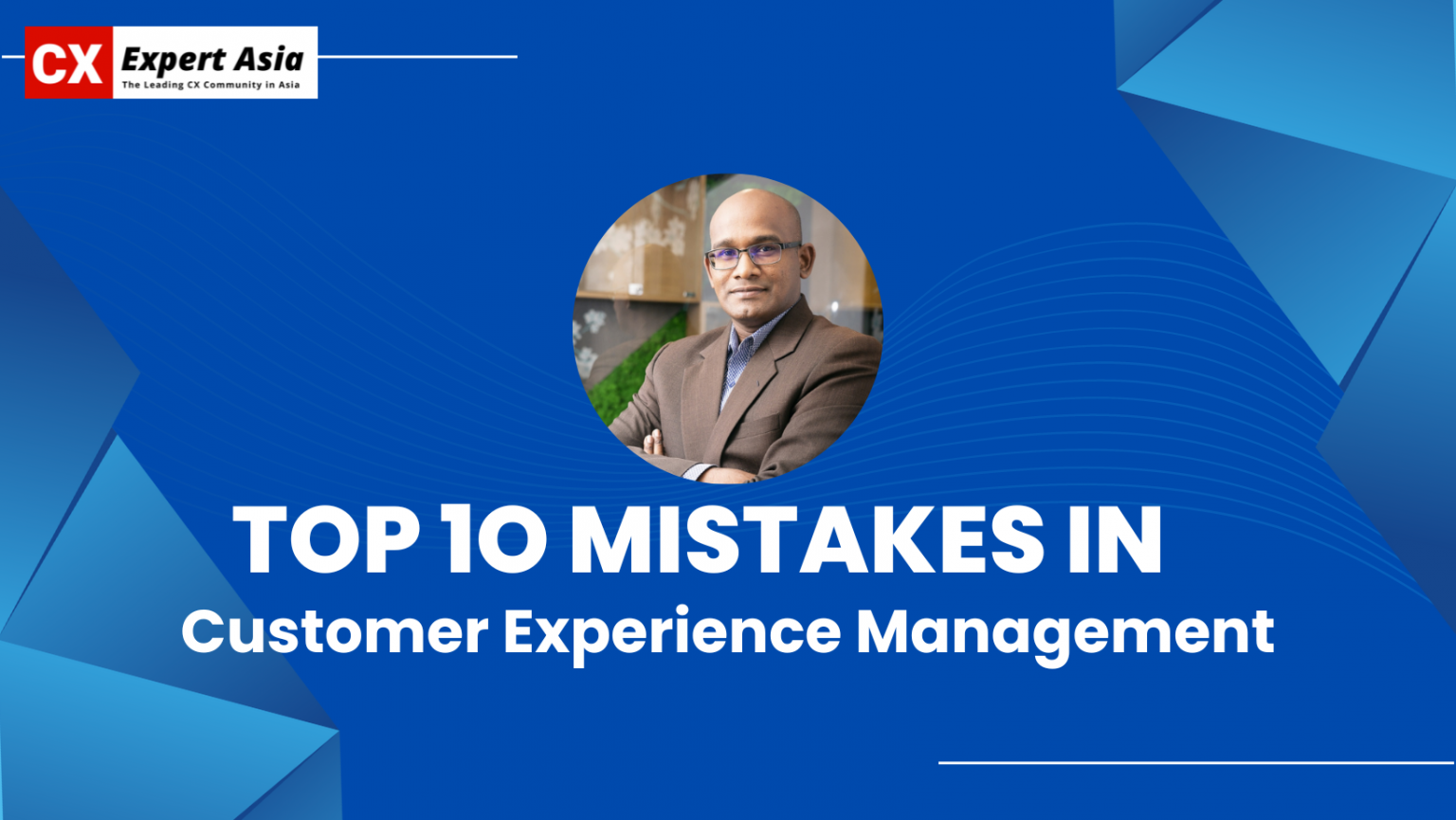 Top 10 Mistakes in Customer Experience Management
Top 10 Mistakes in Customer Experience Management
Customer experience (CX) management has become paramount to business success in today's competitive landscape. However, many companies still need to improve their ability to deliver exceptional customer experiences. This article will explore the top 10 mistakes in customer experience management and provide actionable solutions to overcome these challenges.
In conclusion, avoiding these top 10 mistakes and adopting the recommended solutions can propel companies towards CX excellence. By placing the customer at the heart of their strategies, businesses can build lasting relationships, drive brand loyalty, and achieve sustainable growth and success.
Tags: Customer Experience, Customer Loyalty, Design Thinking
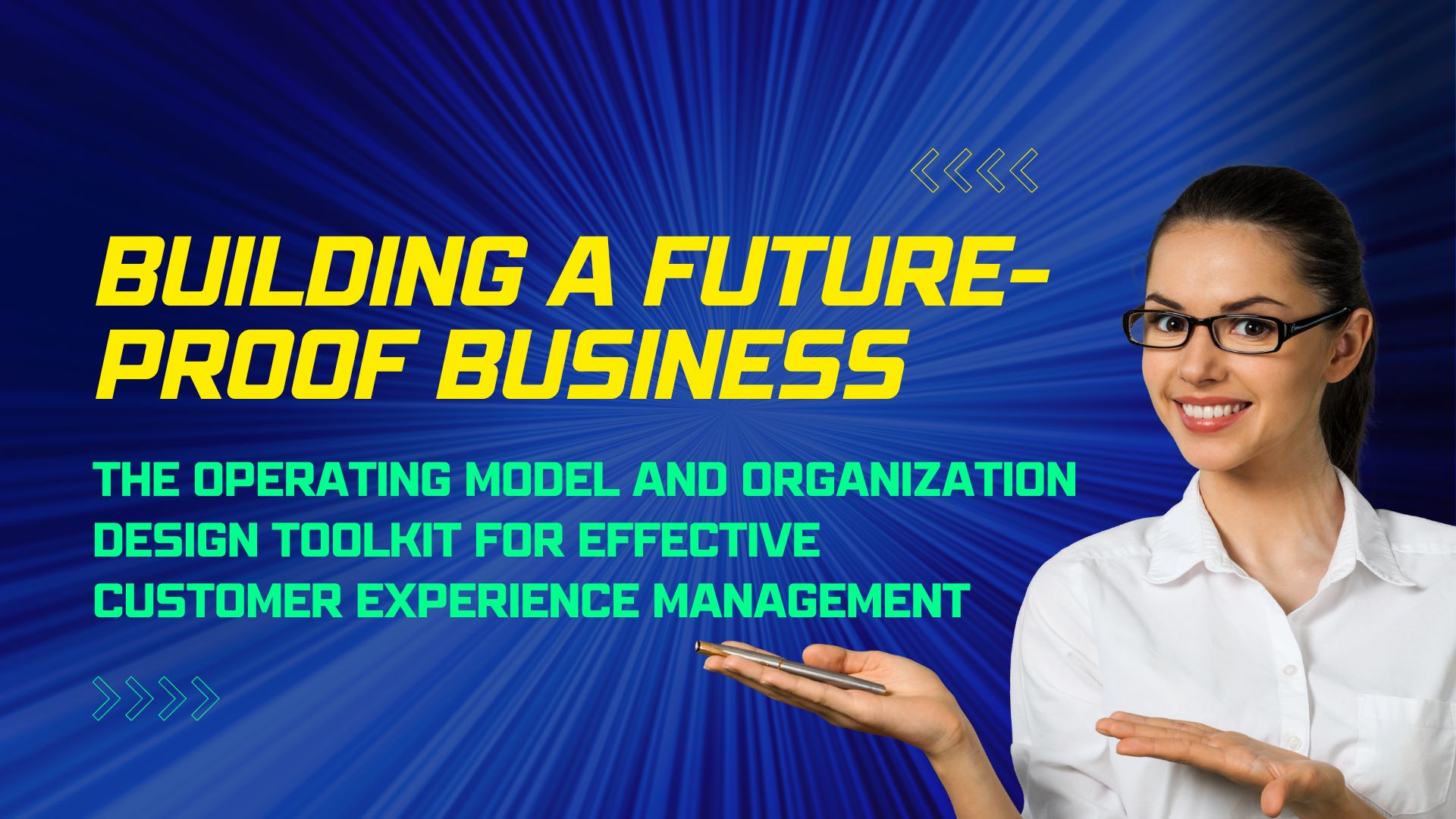 Building a Future-Proof Business: The Operating Model and Organization Design Toolkit for Effective Customer Experience Management
Building a Future-Proof Business: The Operating Model and Organization Design Toolkit for Effective Customer Experience Management
Introduction
In today's dynamic business landscape, the key to sustainable success lies in designing a robust operating model and organization that can effectively execute the company's strategy. A well-structured framework comprising six essential components:–
They act as a blueprint to future-proof your business. By leveraging this toolkit, businesses can design a customer experience management blueprint that fosters innovation, customer-centricity, and resilience.
Capabilities: Aligning Competencies with Strategy
The first step in designing a compelling customer experience management blueprint is identifying and developing the core capabilities necessary to deliver on the strategic goals. Understand your unique value proposition and analyze the competencies required to create an exceptional customer experience. This could include customer-centric skills, data analytics, innovation, and adaptability. Invest in employee training and development programs to cultivate these capabilities within your workforce.
Structure & Governance: Establishing an Agile Organizational Structure
An agile organizational structure is essential to adapt quickly to changing customer needs and market dynamics. Implement a structure that fosters cross-functional collaboration, minimizing silos and promoting information sharing. Clearly define decision-making processes and accountabilities to ensure efficient execution of customer experience initiatives. A governance model should be established to monitor progress, assess performance, and make necessary adjustments.
Talent Management: Attracting, Developing, and Retaining Top Talent
The success of your customer experience management blueprint heavily relies on the calibre of your workforce. Attract and retain top talent that embodies your company's values and is passionate about delivering exceptional customer experiences. Implement talent development initiatives to nurture leadership skills, emotional intelligence, and customer-focused mindsets. Regularly assess and reward performance to maintain employee motivation and engagement.
Processes: Streamlining Operations for Seamless Experiences
Efficient processes are the backbone of a seamless customer experience. Map out customer journey touchpoints and identify pain points to streamline operations. Embrace process automation and technology to enhance efficiency and reduce manual errors. Regularly evaluate and optimize processes to ensure they align with customer expectations and organizational goals.
Technology: Leveraging Innovations for Enhanced Customer Engagement
Incorporating the right technology is critical for future-proofing your business. Identify technologies that empower your customer experience strategy, such as artificial intelligence, customer relationship management (CRM) systems, omnichannel portals and data analytics tools. Embrace emerging technologies that anticipate customer needs, personalize interactions, and deliver proactive solutions.
Culture: Fostering a Customer-Centric Mindset
Company culture plays a significant role in shaping how employees interact with customers. Cultivate a customer-centric mindset across all levels of the organization by emphasizing empathy, responsiveness, and a commitment to exceeding customer expectations. Encourage open communication and feedback channels to understand customer pain points and gather insights for continuous improvement.
In conclusion, the Operating Model and Organization Design Toolkit, comprising Capabilities, Structure & Governance, Talent Management, Processes, Technology, and Culture, is the key to future-proofing your business through effective customer experience management. Your business can thrive in an ever-changing market by aligning competencies with strategic goals, fostering an agile organizational structure, attracting and developing top talent, streamlining processes, leveraging technology, and cultivating a customer-centric culture. Embrace this framework model to build a strong customer experience management blueprint that drives innovation, growth, and long-term success.
Tags: Customer Experience, Customer Loyalty, Design Thinking
 Customer Experience Consulting
Customer Experience Consulting
Location: Malaysia Fees: 5000
Service Type: Service Offered